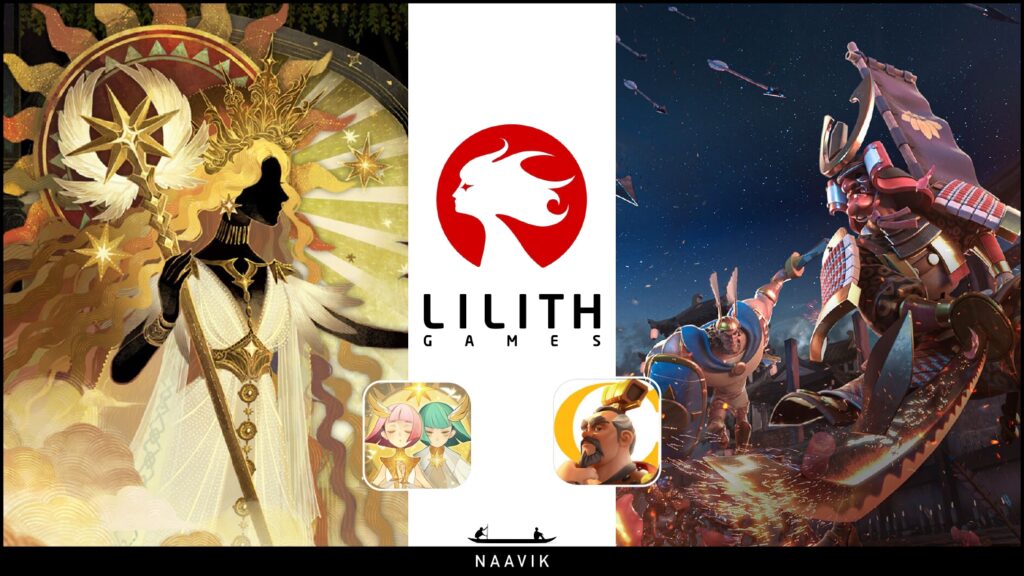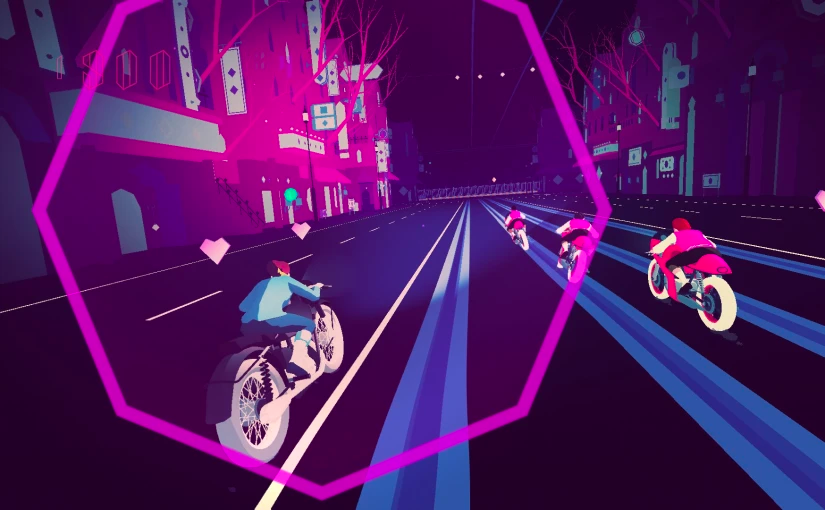
In 2021, Megan Ellison returned from her family’s private island in Hawaii, after a two-year period of self-exile from the company she founded as a 24-year-old college dropout 10 years prior. Annapurna Pictures swiftly rose to Hollywood prominence by producing Oscar-winning films like "Zero Dark Thirty" and "If Beale Street Could Talk". Ellison even claimed the distinction of being the first woman to have produced two Best Picture-nominated films in the same year, "Her" and "American Hustle", when she was 28.
But Annapurna was floundering after Ellison expanded the business to begin distributing, not just producing, marquee films — a much more expensive role typically handled by major studios like Paramount or Disney. The company narrowly avoided bankruptcy after her father, Oracle founder Larry Ellison, the fifth-richest person on Earth, helped rescue it. The firm’s executives had already been leaving in droves and its content pipeline had dried up, throwing Ellison into self-doubt and leading to her extended stay in Hawaii.

By the time she returned, Annapurna’s film business may have been in tatters, but Annapurna Interactive, the game division she launched in 2016, had been charting success after success. This remarkable string of hits, including Sayonara Wild Hearts and The Unfinished Swan has only accelerated in the present day. And while Annapurna’s hopes are, for now, largely pinned on gaming, it is not the only movie company moving into the game industry.
These new entrants, however, are a far cry from the many failed attempts by Hollywood heavyweights like Disney and Universal to enter AAA game development. Instead, like Annapurna, they are independent film studios and production companies pursuing games that range from small indie titles to AAA behemoths. As these filmmakers pursue gaming in earnest, they may also redefine what an entertainment company looks like.
The Story of Annapurna Interactive
Ellison debuted Annapurna Interactive in 2016 with a handful of existing executives from Annapurna Pictures and new leadership hired from Sony Santa Monica Studio’s shuttered indie incubator, which had produced Journey and Everybody’s Gone to the Rapture. Ellison had always enjoyed games and launched the new Interactive division to publish “personal, emotional and original games that push the boundaries of interactive content,” similar to Annapurna's film titles.
Like Annapurna Pictures, Interactive scored one of its industry’s biggest awards almost immediately when its first published title, What Remains of Edith Finch won the BAFTA for Best Game in 2017. It followed this up with Outer Wilds winning the same award in 2019, and has since produced other indie darlings like Donut County, Maquette, Cocoon, and Stray.
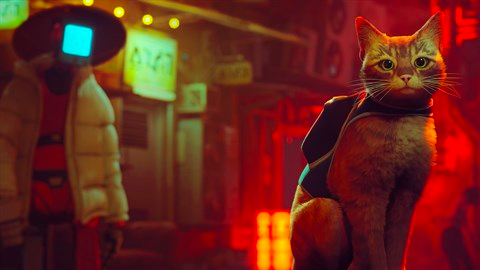
While the relationship between Annapurna and the developers it partners with covers all the standard publishing responsibilities, the company’s film background differentiates it in a few ways. It has provided access to some of Hollywood’s top creative talent: Bryce Dallas Howard, Willem Dafoe, Queen Latifah, and Daisy Ridley have all lent their voices to Annapurna games. The publisher’s next game, Open Roads, features Kaitlyn Dever, who also starred in Annapurna Pictures’ "Booksmart".
Some of the gaming division’s hits are poised for transmedia treatment too: Annapurna Animation (yes, they also have an animation arm) is adapting Annapurna Interactive’s Stray as a feature film. These types of creative synergies have long been desired by blockbuster film studios and AAA game publishers, but Annapurna is realizing them at a smaller and arguably more effective scale.
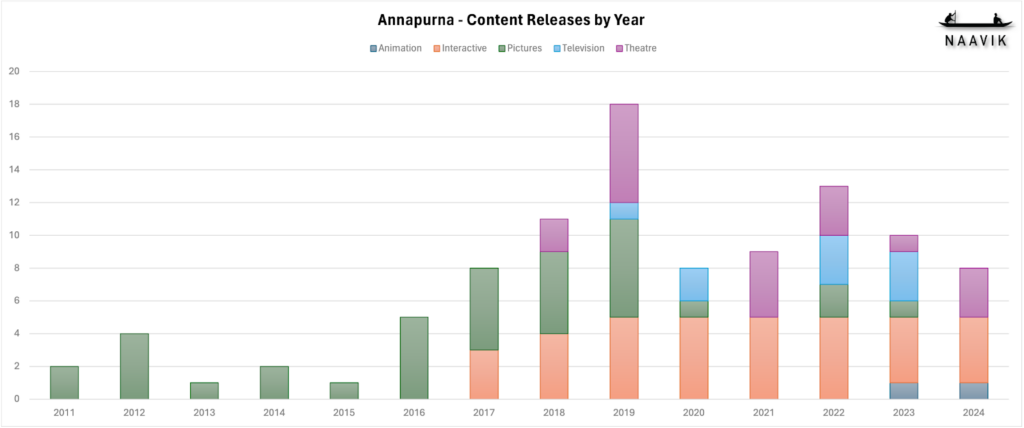
Annapurna Pictures has long pursued a strategy of backing visionary, auteur-driven films that major studios find too risky, a creative ethos it has also brought to games. According to its developers, the publisher’s trust in the creative process comes from the fact that most of its leaders are creatives themselves, and are able to engage with design and aesthetic choices at a deeper level, though they remain largely hands-off.
Annapurna's publishing strategy revolves around seeking out independent games crafted by creatives who struggle to secure funding elsewhere. The company is very active in collaborating with platforms and subscription services, leveraging timed exclusives and partnerships with services like Game Pass, Apple Arcade, and Netflix. These arrangements may suggest a potential preference for upfront cash from platforms over reliance on game sales, and that its games are a better fit as part of those services — possibly in response to the prevalence of discounted prices for shorter, indie-style games on Steam and consoles.
Upfront revenue from platforms and subscription services also mirrors Annapurna's distribution methods in film and TV, where it acquires rights to projects and sells them to streaming platforms or other distribution partners. By adopting this model, Annapurna aims to cultivate a loyal fanbase, irrespective of entry point, whether it be through a subscription service, free game offering, or discounted Steam sale. The ultimate goal is to broaden the label's appeal, encouraging fans to explore other Annapurna titles and ancillary products, while also maximizing the revenue potential for each project by implementing a windowing strategy reminiscent of film and television, by releasing games across multiple channels over time.
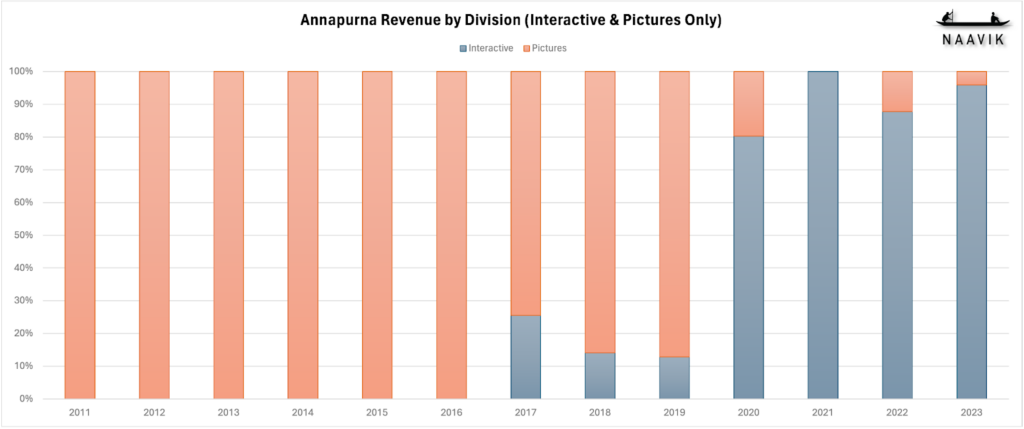
The former head of Annapurna Interactive, Nathan Gary, is now the president of the entire company, while Ellison remains CEO and head of the film division. However, the expensive foray into film distribution, several unprofitable releases, staff turnover, and Ellison’s multiyear absence in Hawaii during COVID may have taken the wind out of Annapurna Pictures’ sails.
“Now, after years of inactivity making movies, and a steady stream of executive departures, much of the entertainment industry has written off Annapurna as a meaningful player,” according to Variety. “They are a nonentity [in film],” a top talent agent is even quoted as saying, yet “the company is in the black in great part thanks to Annapurna Interactive.”

As a game publisher, it has developed a following that has come to associate its name with a guarantee of both quality and artistry. In addition to launching its first internal development studio in 2020, Annapurna made its first acquisition (of South African co-development shop 24 Bit Games). It’s also now developing a Blade Runner title, the first game from its new internal studio.
Beyond Annapurna: Skydance, Bad Robot, and More
While Annapurna has made the biggest name for itself in gaming, other Hollywood firms outside the traditional major studios have also been ramping up game development and publishing.
Megan Ellison’s brother David is also leading his own film company, Skydance, into gaming — while simultaneously making a high-profile bid for control of Paramount. Known primarily for blockbuster sci-fi and action franchises like "Mission: Impossible", David Ellison’s Skydance launched Skydance Interactive in 2016 — the same year his sister announced Annapurna Interactive – by buying a VR studio. Skydance continues to publish VR games (like The Walking Dead: Saints and Sinners) through this label, but in 2019, it also revealed Skydance New Media, a gaming division focused on console and PC titles helmed by renowned Naughty Dog veteran Amy Hennig and EA producer Julian Beak. Tencent also invested in Skydance for a reported 5%-10% stake in the firm.

Skydance’s approach thus far is much more similar to how the major Hollywood studios have tried to enter gaming in the past: as a combined developer and publisher that creates AAA games based on established IP. Interestingly, Skydance has not prioritized gaming adaptations of its own film IP, and is instead working with Disney on Marvel 1943: Rise of Hydra (new trailer here) and a "Star Wars" game.
If David Ellison is successful in his acquisition of Paramount, it will give Skydance a plethora of valuable IP, like "Star Trek", that has already been adapted into gaming formats through Paramount’s successful licensing business, particularly on mobile and Roblox.

Famed filmmaker JJ Abrams has also been leading his own production company, Bad Robot, into gaming. Back in 2013, Abrams and Valve’s Gabe Newell gave a joint keynote at D.I.C.E., where they announced the intent to collaborate across both games and film. Bad Robot subsequently co-developed Team Fortress 2’s PASS Time game mode, its first foray into game development. In 2018, the company formally revealed a joint venture with Tencent and Warner Bros. to launch Bad Robot Games. A year later, Warner signed a $250M deal for Bad Robot to produce original films, television, and games.
Led by former Valve and Oculus manager Anna Sweet, Bad Robot collaborated with Epic Games on the short-lived mobile title Spyjinx, which had the misfortune of soft launching only months before Apple removed Epic’s titles from the App Store in 2020. The company is reportedly now working on a AAA PC/console online multiplayer title built around new IP. Clearly, Bad Robot’s connection with Valve has remained strong, as Abrams also announced a Portal film adaptation in 2021.
Horror film maestro Jason Blum’s production company has also started a game publishing division. Like Annapurna Interactive, Blumhouse Games will primarily back indie developers. And though the company has an impressive IP library — including "Paranormal Activity" and "The Purge" — the focus of the gaming team is to “meaningfully leverage the company’s brand, reputation, and creative talent” in original games instead of monetizing existing franchises.
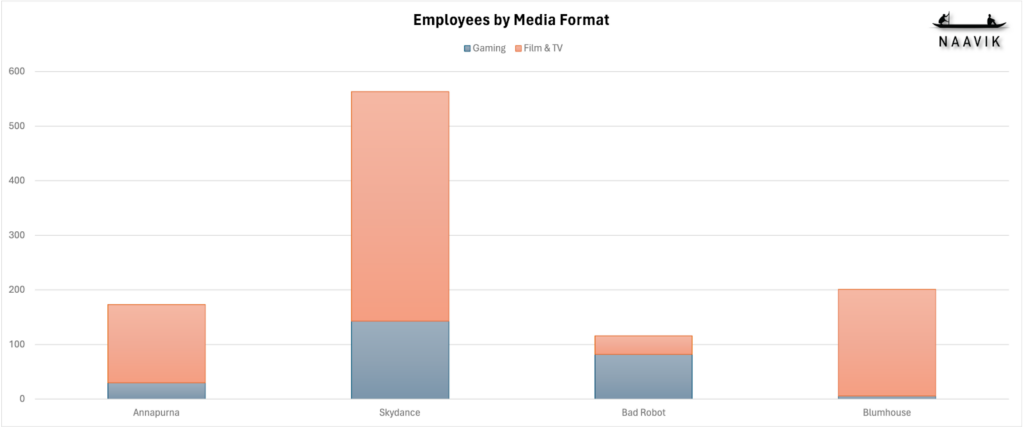
In film, horror has been a persistent bright spot amid the general downturn in box office revenue due to its ability to draw theatrical audiences with relatively low production costs. Blumhouse is by far the genre’s leader, cementing its status by merging with rival Atomic Monster earlier this year.
Having essentially cornered the horror film market, the company likely sees its biggest opportunities for future growth in other mediums, and indie horror games present many of the same dynamics the company capitalized on in cinema: low cost, high upside. As Blum himself put it, “The strategy for the company is to do the same thing with games that we do with movies: look for original, low-budget things that could be turned into games.”
The success of indie horror titles like Lethal Company clearly validate Blumhouse’s entry into the market, and the eponymous movie adaptation of Five Nights at Freddy’s grossing nearly $300M implies some very attractive potential synergies in the medium to long term.
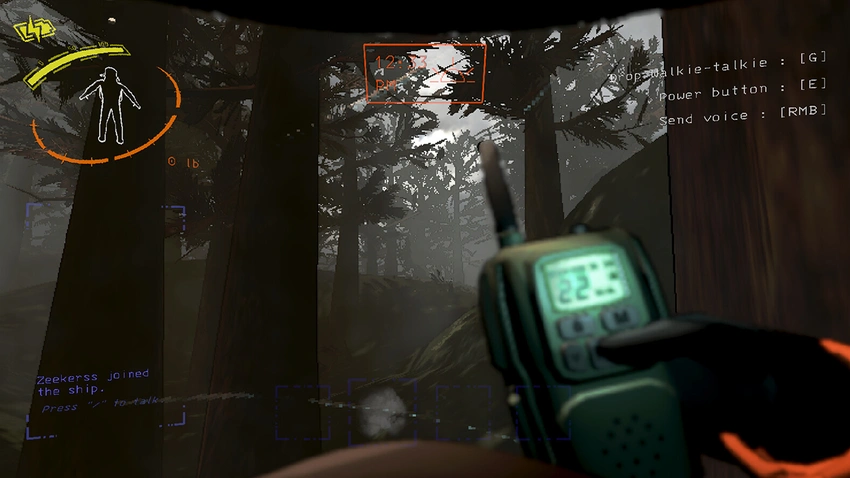
New Opportunities, New Questions
So what ties these companies together, and what motivated them to enter a new and different entertainment medium?
One of the most fundamental differences between Hollywood’s previous attempts at game publishing and today’s initiatives is that today’s filmmakers have an understanding and appreciation of the medium that was largely absent a generation ago.
Many of Hollywood’s new creative and business leaders grew up playing games. Creatively, they want to publish unique, original, and high-quality content in a medium they know and care about. Businesswise, they also know gaming is an enormous market that is best approached on its own terms, including having the patience required for game development timelines that filmmakers in the past have not.
Very few of these firms aim to adapt their parent company’s films into games. Instead, nearly all are creating new IPs, backing independent creators, or adapting IP licensed from other sources. It’s also possible that some of the original games they create may be later leveraged in film or TV, bringing in-house the growing trend of Hollywood successfully adapting gaming IP.
They are, however, largely inheriting the creative ethos of their film-based colleagues: Skydance is doing big-budget franchise fare, while Annapurna is focusing on personal storytelling, and Blumhouse is going after games within its genre wheelhouse.

There is also the matter of relative production costs and upside potential, especially when compared to film. Annapurna’s films have averaged $30M in production costs alone and $44M in box office receipts, while its “mid-budget” game Neon White cost $2M (excluding marketing) yet pulled in an estimated $7.8M on Steam — a much better return, even if on a smaller scale, and likely a fairly average profile among Annapurna’s string of hits. Blumhouse Games is explicitly targeting projects with budgets below $10M, and both publishers are likely hoping to back the likes of low-cost, viral indie successes like The Outlast Trials (estimated Steam revenue: $32M) and Sons of the Forest ($126M).
Annapurna saw massive success recently with Stray, which looks to have brought in $93M on Steam alone, excluding sales on Xbox and PlayStation (for which Sony paid extra for timed console exclusivity). Both Annapurna and Blumhouse are seeking to leverage their creative expertise and name brands to differentiate their gaming content, which is impactful largely because the gaming content and audience are so aesthetically and thematically similar to their films, even if the IP is not shared.
But while these companies have already spent years hiring executives and starting new projects, only Annapurna has actually released any content on a major platform. Skydance Interactive has released a handful of VR titles, while Skydance New Media, Bad Robot, and Blumhouse have not shipped a single game to full release. Games take time to create, and it is to these companies’ credit that they have remained invested in content creation despite lengthy development cycles. One of the clear differences is that Annapurna began by signing smaller independent games instead of building new games from scratch, shortening the time to market considerably, relative to building all-new AAA titles like Skydance and Bad Robot are doing.
The risk here is considerable: Skydance is leaning on big IPs as a hedge, but that is far from a foolproof strategy. Meanwhile, Bad Robot’s upcoming title will presumably be leaping into the multiplayer/live-services struggle. Though Annapurna has seen remarkable success, it has been both shrewd and lucky to have achieved as much as it has, and should not necessarily be viewed as a model for other midsize film companies to emulate.
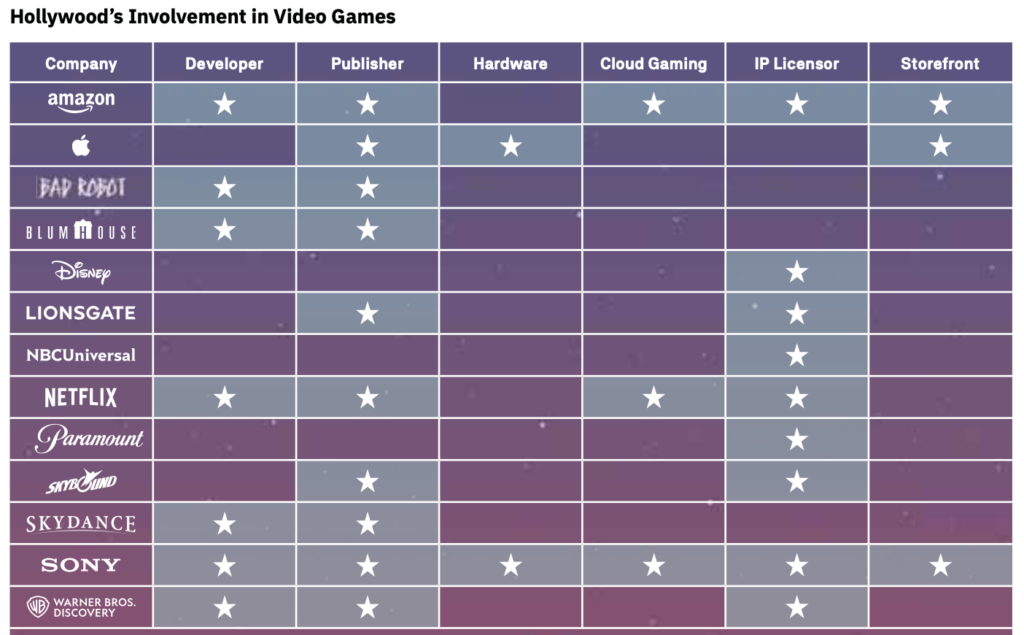
A New Type of Entertainment Company
Despite their ambitions in gaming, these companies may have something even bigger in mind: the creation of an entirely new type of media firm, one in which indie/AA transmedia is front and center, and consumers develop an affinity for the company’s overall brand, not just their IPs.
Annapurna’s work in gaming has given it an increasingly recognizable and highly regarded brand, even as its film business has collapsed. The big opportunity for the company is not just to transition from a film studio to a game publisher; instead, it should use its reputation in gaming to foster a pan-entertainment brand that attracts its audience to content across all media formats, monetizes a growing number of superfans — through merchandise, events, and more — and simultaneously leverages cost and marketing synergies across IP, talent, and production.
Blumhouse, Bad Robot, and the others (even Riot Games is pursuing a similar strategy) have the same opportunity, but it is another firm that may ultimately be Annapurna’s most serious competitor. A24, the adored company behind "Midsommar", "Euphoria", and "Everything Everywhere All at Once", has done what other film distributors and producers have found impossible: build a devoted consumer brand solely through the quality of content.
A24’s remarkable success as a “film distributor-turned-lifestyle brand” allowed it to raise $225M in growth equity at a $2.5B valuation in 2022. Board member Ken Fox said his firm invested because of the unique nature of brand loyalty to a film company. “North of 60% of the people that go to see an A24 movie in a theater go because it’s an A24 film,” he said. “Basically, A24 and Disney are the only two companies that test that way.”
Annapurna is enjoying this same phenomenon in indie gaming circles, and with its struggles in film, the company’s challenge now is to convert that gaming brand loyalty into a consistently monetizable asset across multiple channels.
A24 leads the way here, but it is clearly the strategy of other players too. A24 now sells books, magazines, board games, produces a podcast, has invested in a music label, launched a cosmetics line, and acquired an off-Broadway theater. Annapurna has Broadway productions, vinyl soundtracks, and premium physical collections on PlayStation and Switch. Bad Robot and Riot have record labels. A24, however, has gone a step further with its own subscription-based membership (which does not include on-demand access to its primary content).
Will A24 ever reach into gaming, as its filmmaking competitors have done? Will Annapurna Pictures find its footing again? Regardless, they serve the same audience through different media formats, and are ultimately converging toward the same goal, one starting from games, the other from film. There are countless instances where Annapurna is described as the A24 of games, often without awareness that Annapurna is also a renowned film and television company. The race is on, however, for each to define itself as something more.
A Word from Our Sponsor: OVERWOLF

Integrate Safe UGC Into Your Game with CurseForge For Studios
Overwolf is an all-in-one platform that lets creators build, share, and monetize in-game apps, mods, and private servers. With over 165,000 creators, and 41M monthly active users, Overwolf supports the world’s most popular AAA titles such as League of Legends, Minecraft, World of Warcraft, and 1,500 other games.
For game developers, Overwolf offers CurseForge For Studios. CurseForge For Studios is a white-label solution that lets game makers and publishers easily integrate mods safely and seamlessly into their games, both existing and new, at zero cost. It’s battle-tested by AAA studios and games, including Maxis (The Sims™ 4), Studio Wildcard (ARK), TakeTwo Interactive (KSP), and others.
CurseForge For Studios offers:
- Cross-Platform Modding: Integrate Overwolf’s open-source SDKs and plugins to let players discover and install mods in-game, across all platforms and storefronts.
- Full Analytics Dashboard: Get a full modding usage dashboard to learn which mods are popular.
- Safe and Secure Moderation: Studios define policies and guidelines on what is permitted, and these are then enforced by Overwolf - with only authorized content being published.
- Creator Relations and Payments: CurseForge supports creators with monthly payments, equity investments, developer contests, and hackathons to get their creative juices flowing, and kickstart content creation for your game.
Game of the Week
CoD Warzone Mobile’s Lackluster Launch
Written by Abhimanyu Kumar, Naavik Co-Founder & Managing Partner

Developer: Multiple Activision internal studios
Publisher: Activision
Platform: Mobile
Status: Global launch on March 21st, 2024
Genre: Battle Royale / First-person Tactical Shooter
Gameplay: Link
How Is It Different from CoD Mobile?
While CoD Warzone Mobile (CoDWM) feels very similar to TiMi Studio’s CoD Mobile (CoDM) in terms of its shooting gameplay, there are a host of differences between the two products.
1. In-house Development: Most obviously, CoDWM is developed and published 100% in-house at Activision versus CoD Mobile, which was developed by TiMi Studio and published by Activision. In fact, it’s a little bit surprising to see how many internal studios were involved in developing CoDWM.
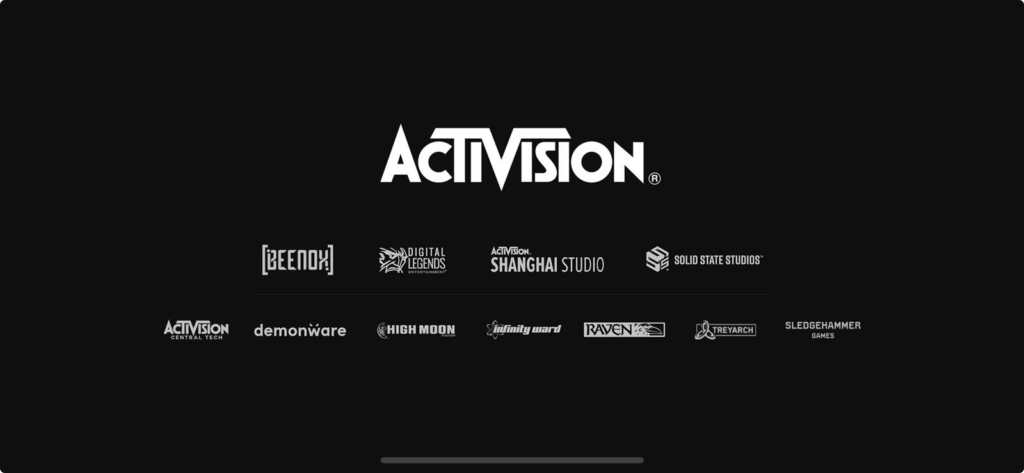
2. Installment-Specific Branding: CoDWM uses the “Warzone” series branding, as it tries to deliver CoD Warzone’s PC/console experience on mobile, while CoDM uses the “Call of Duty” branding, as it tries to deliver a great mobile battle royale experience that inherits from the entire Call of Duty IP, not being tied down to any one installment/series of the game.

3. Cross-progression Enabled: CoDWM has cross-progression enabled with its PC/console counterparts (through using Activision ID), while CoDM is a standalone experience. This tends to indicate that CoDWM could be more viewed as an attempt by Activision to provide its PC/console player-base with a more on-the-go CoD Warzone experience, and use the mobile SKU as a potential acquisition funnel for CoD Warzone’s PC/console SKU.

4. Lower Game Mode Variety: CoDWM has a much lower number of game modes (currently six, and primarily focussed on battle royale) compared to CoDM (way more than six, with a wide variety of game styles). That makes the CoDM experience much more inclusive to a broader audience. That said, it is still early for CoDWM, and it remains to be seen how Activision expands its game mode list over time.
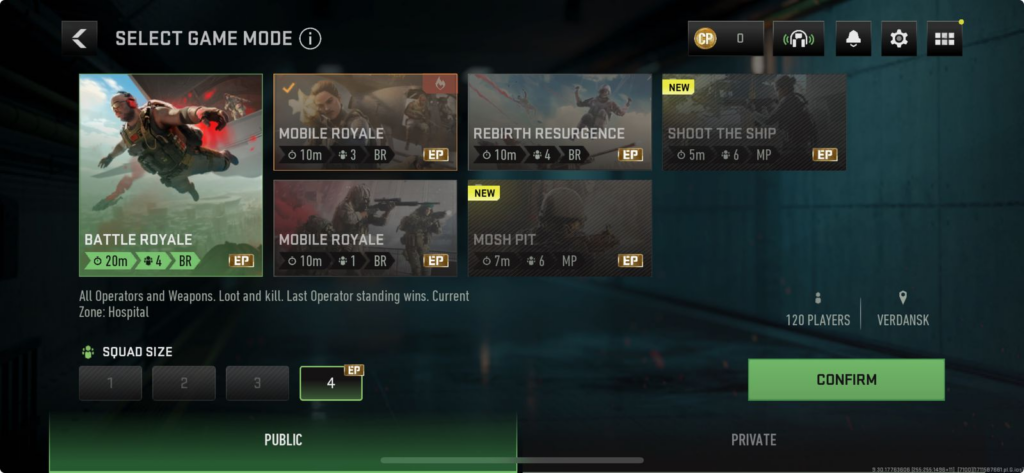
5. Weaker Monetisation & Live-ops: At the moment, CoDWM clearly showcases a lower intensity of merchandising (sales, bundles, limited time offers etc.) and live-ops efforts (events, limited time game modes etc.) compared to CoDM. This is partially expected since CoDWM just launched, but since both games are mostly targeting similar player bases, CoDM (apart from other battle royale games) has set player expectations very high, and it will be interesting to see whether CoDWM can/will catch up to these expectations over time. If not, the game’s monetisation will almost surely suffer longer term.
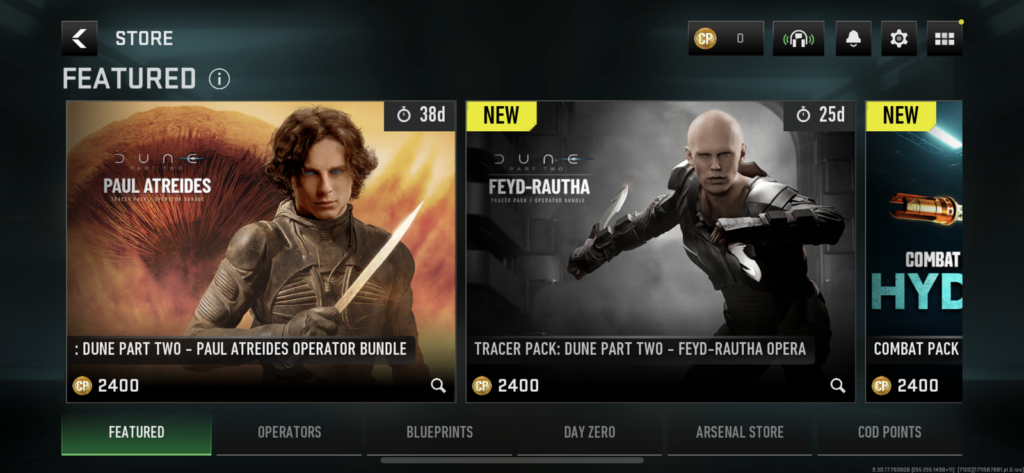

6. Technical Performance Issues: One of the biggest player complaints for CoDWM (especially on Android) is poor technical performance of the game on a wide range of devices, and in comparison to CoDM. This includes issues like rapid device heating, generally lower game responsiveness to player inputs, and server connectivity issues resulting in mid-gameplay lags. As noted by Joseph Kim in his GameMaker’s newsletter: “… it is rumored that the game was built on Activision’s IW engine 9.0. This may have been a big mistake to use a PC game engine for a mobile game.”
For a shooter game where players’ ability to play the game well is dampened by poor technical performance, these are all pretty serious issues. But it’s clear that Activision has focussed optimizing CoDWM’s performance for higher end devices, even though that might be the wrong decision from the perspective to maximizing audience accessibility:
1. iOS:
- CoDWM: Compatible with Apple devices running iOS 16.0 or later with at least 3 GB of RAM (excluding iPhone 8).
- CoDM: Compatible on iOS devices with at least 2 GB of RAM and running iOS 9.0 or later.
2. Android:
- CoDWM: Compatible with Android devices with at least 4 GB of RAM and running Android Adreno 618 or better.
- CoDM: Compatible with Android devices with at least 2 GB of RAM and running Android 5.1 and up.
How’s It Doing?
Even though CoDWM was able to amass 50M pre-registrations, the game’s launch has generally stacked up poorly to that of CoDM’s, according to data.ai estimates:
- Global downloads on launch peaked at ~4.5M for CoDWM versus ~21M for CoDM.
- Global daily average revenue is abysmal for CoDWM at ~$200K per day (and trending downwards) versus CoDM’s ~$750K to $1M per day.
- It’s still early to look at revenue efficiency (showcased by RPD), but CoDWM’s D7 RPD is currently half that CoDM’s, at launch.
- It also doesn’t seem like CoDWM’s launch has caused a significant dip in CoDM’s revenue performance during launch period, although we will need to wait to see whether there is any kind of impact to active users — albeit unlikely.

Most notably, CoDWM’s store ratings are really poor at the moment and highlight how CoDM is clearly the better product for the masses, which is especially important to consider for a genre as globally popular as battle royale shooters.
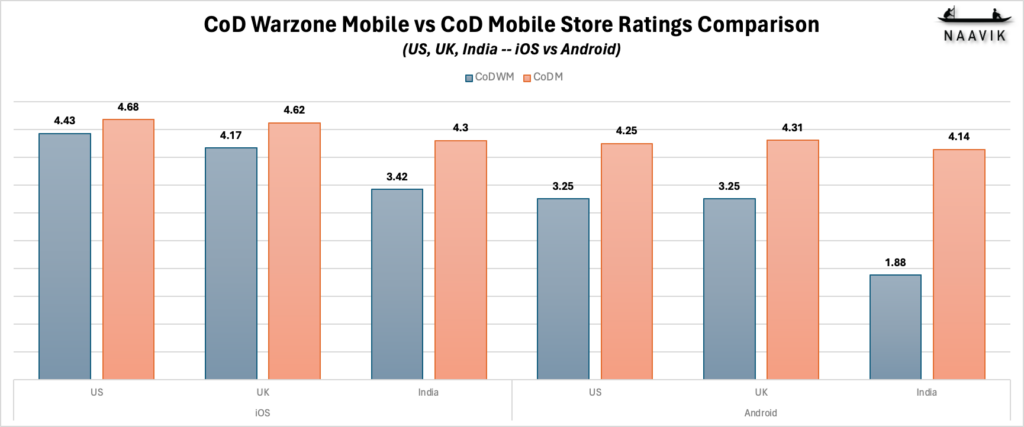
Overall, CoDWM’s current ratings reflect a lot of product differences highlighted above, such as lack of game mode variety, weaker live-ops, and poor technical performance. Further, CoDWM doesn’t give the market a shooter experience that is truly differentiated in any significant way in comparison to other games available on the market (with or without the CoD IP), and therefore, there is little reason for players to switch over.
CoDWM clearly has a long way to go to compete with CoDM’s dominance, if that is Activision’s eventual goal. But if Activision’s goal with CoDWM is more to give its PC/Console player base a mobile experience of CoD Warzone that they can enjoy anywhere, it’s probably delivering on that for players belonging to tier 1 markets, who also have higher end devices. Whether that endeavour is hitting Activision’s internal profitability goals is a different question, and it will definitely be interesting to see how the company thinks about expanding its CoD mobile strategy with future instalments of the CoD PC/Console product.
Our Gamification Consulting Services
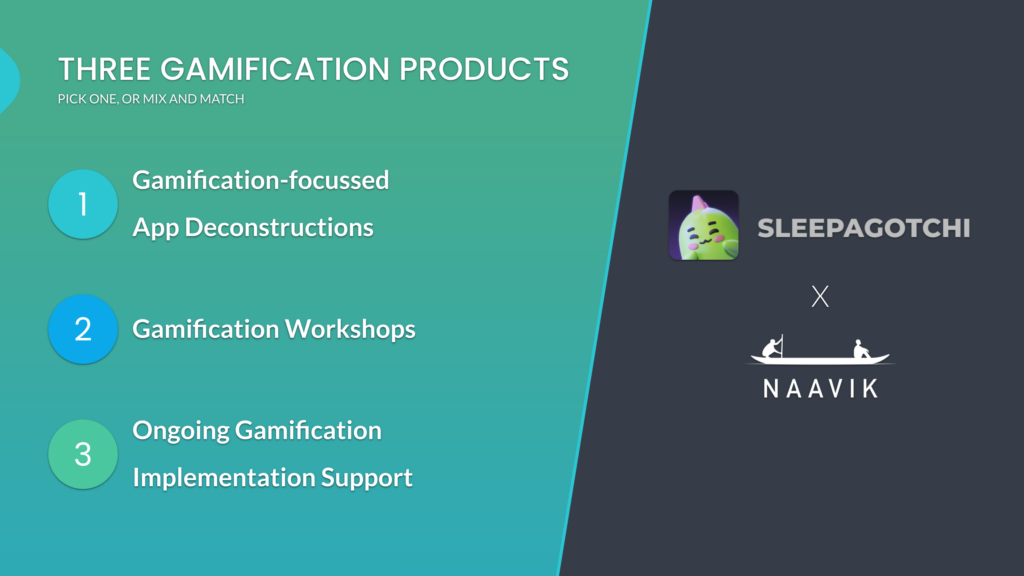
Today, we’re highlighting our gamification consulting services! Applying game mechanics to all sorts of applications has proven to boost retention, engagement, and revenue — but doing it right can be harder than it seems. More specifically, Naavik offers constructive gamification deconstructions, gamification workshops, and ongoing flexible support. Here is what one of our clients had to say.

“We have been very happy with the support Naavik provided to Sleepagotchi. They have an incredible expert network, with world-class game designers, narrative designers, and UA specialists. The team helps us in developing and stress-testing new game core loops, think deeply about our game constraints, and something that is rare for a consulting partner - care deeply about our mission and vision.”
- Anton Kraminkin, Founder & CEO of Sleepagotchi
If you’d like to learn more, reach out here! Also check out our expanded consulting service portfolio here.





